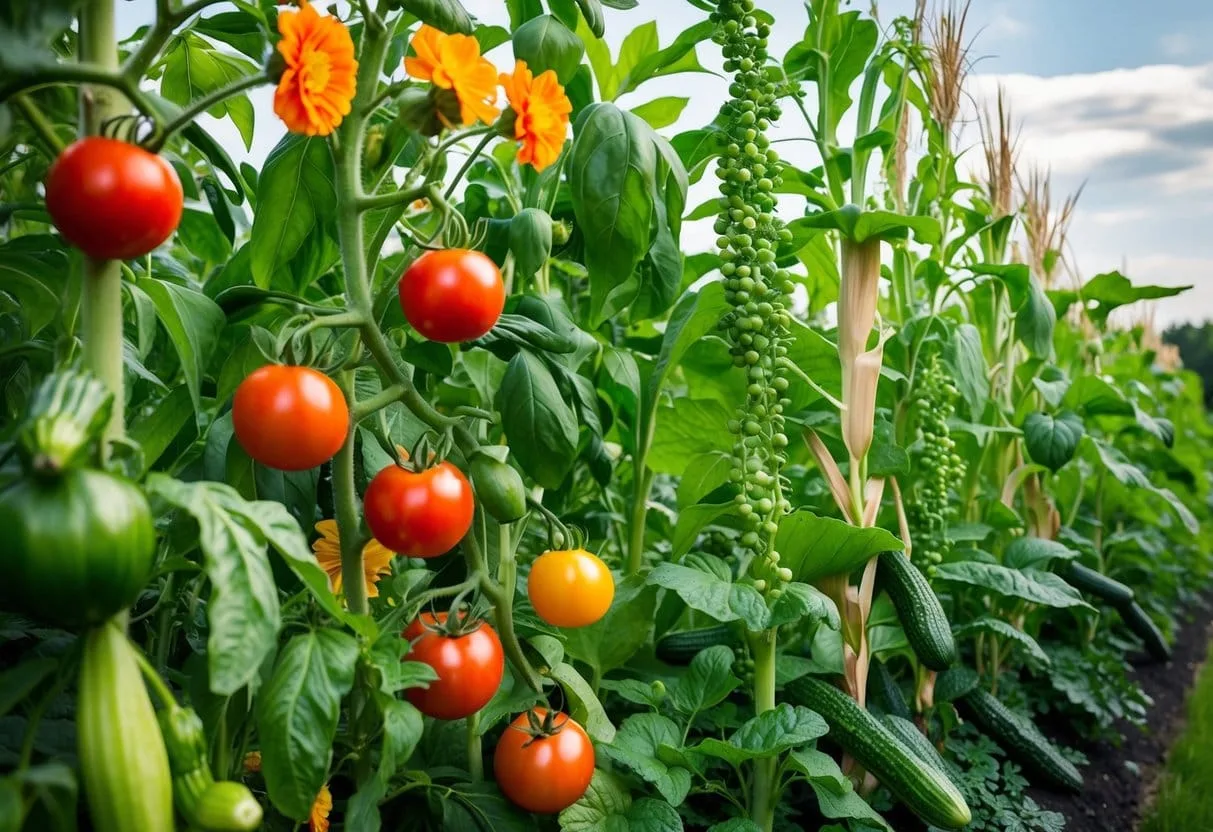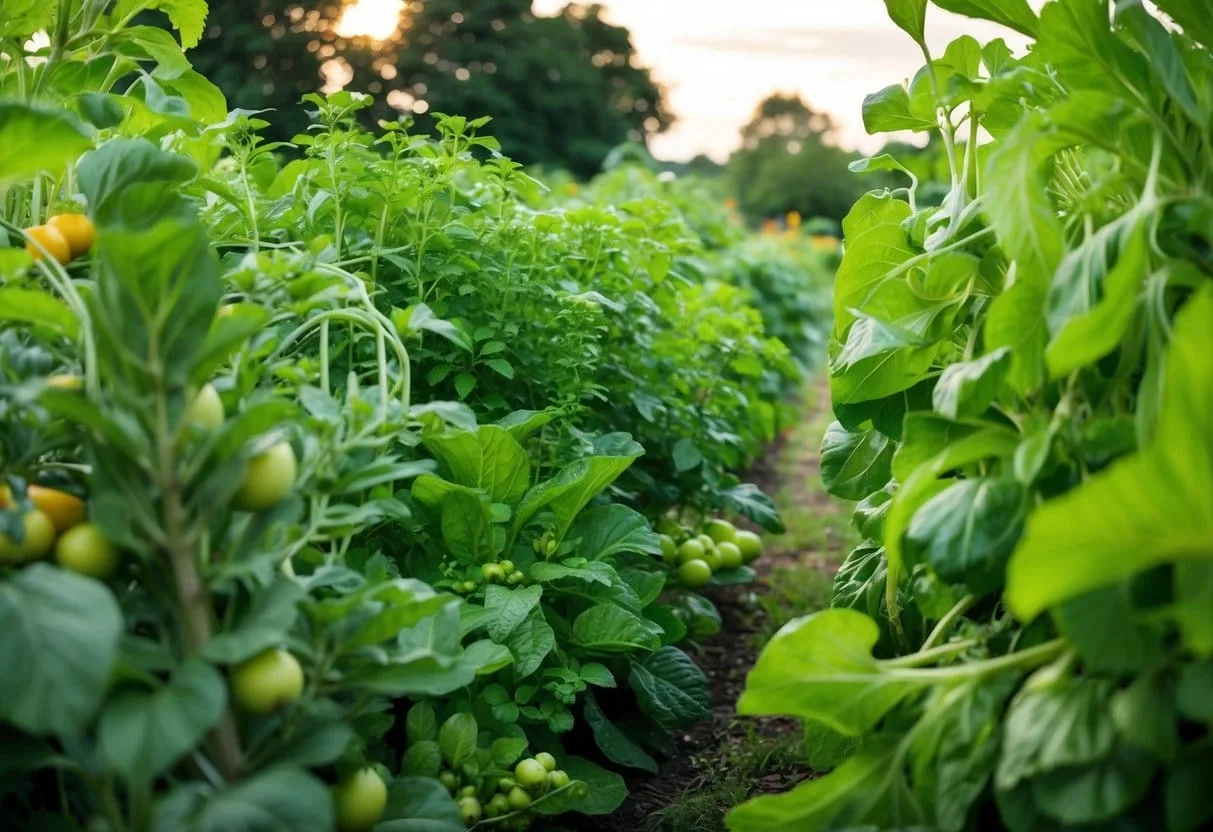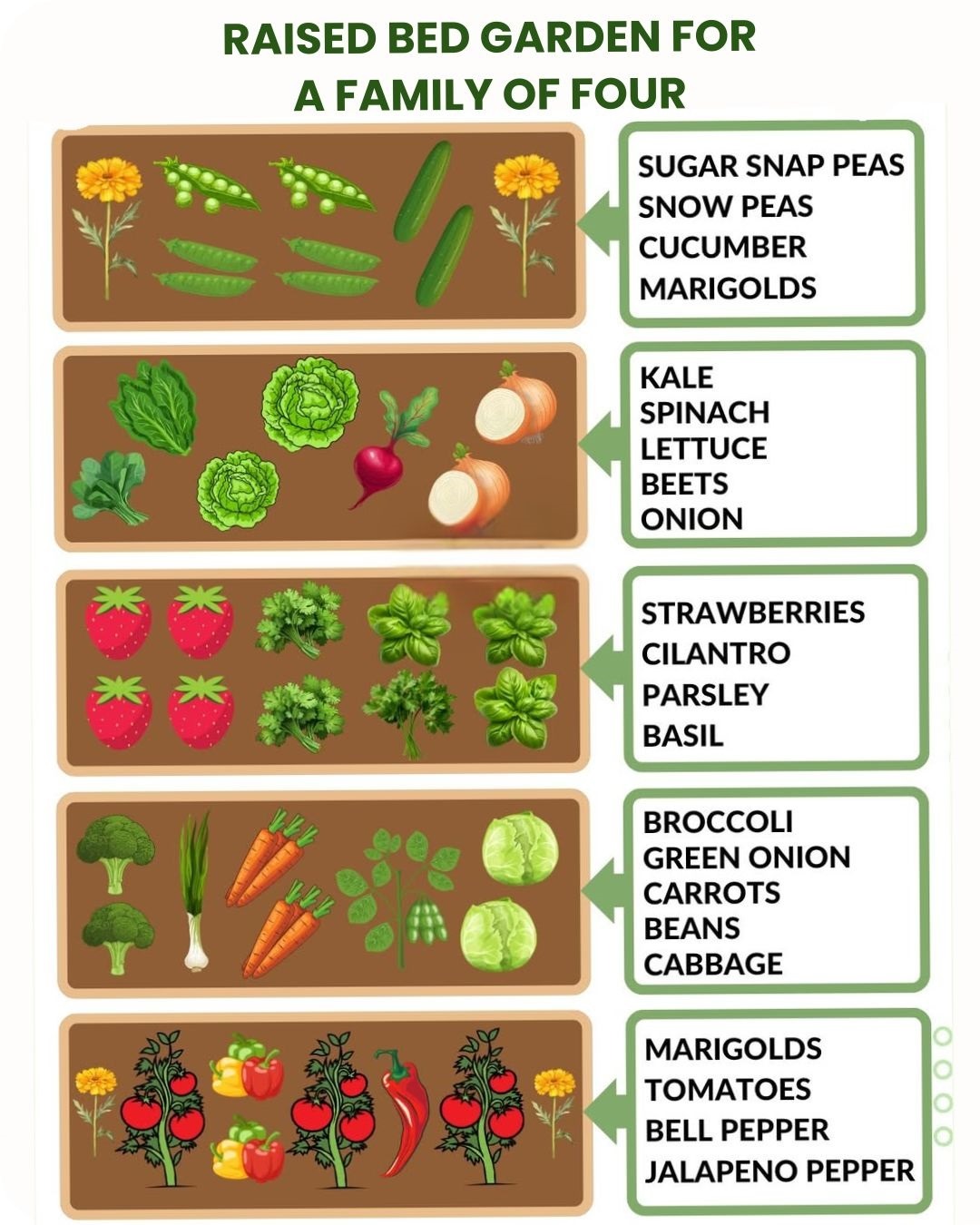I wasn’t aware of companion planting for a long time, but learning about it changed my gardening experience. Once I began using these techniques, my garden flourished with stronger and healthier plants. This method is a valuable strategy that many gardeners can benefit from.
I want to share insights on which plants work well together and the reasons behind these pairings. Understanding companion planting can open up new possibilities for your garden and improve your overall yield.
Key Takeaways
- Companion planting can enhance the health of your garden.
- Pairing the right plants together makes gardening easier.
- Exploring successful combinations can yield great results.
Companion Planting Combos That Just Work

1: Tomatoes & Basil
I find that combining tomatoes with basil creates a beneficial relationship in the garden. Basil’s strong scent acts as a natural pest repellent, keeping away harmful insects like aphids and hornworms. Additionally, basil may enhance the flavor of the tomatoes, making this pairing both practical and delightful.
2: Carrots & Onions
When I grow carrots alongside onions, I notice a significant difference in pest control. The spicy aroma of onions helps to fend off pesky carrot flies. Meanwhile, carrots work to keep the soil loose, allowing onion bulbs to develop more effectively. Together, they create a harmonious growing environment.
3: Corn & Beans
The combination of corn and beans is a classic duo that I always recommend. The beans are great at fixing nitrogen in the soil, which significantly benefits the corn. At the same time, the tall corn stalks provide sturdy support for the climbing beans, creating an efficient use of vertical space in the garden.
4: Cucumbers & Nasturtiums
I often plant nasturtiums near my cucumbers as a smart strategy for pest management. These colorful flowers act as decoy plants, drawing pests like aphids and beetles away from my cucumbers. By using nasturtiums in this way, I can help maintain a healthier crop without harsh chemicals.
5: Peppers & Marigolds
In my experience, marigolds are invaluable companions for peppers. Their unique scent naturally deters nematodes and aphids that could harm pepper plants. By planting marigolds among my peppers, I create a protective barrier that helps keep my peppers thriving and healthy.
6: Lettuce & Radishes
I love pairing lettuce with radishes because they complement each other’s growth. The radishes break up and loosen the soil, which allows lettuce roots to penetrate deeper. This combination ensures that the lettuce has a more secure foundation, making it less susceptible to damage from external factors.
7: Squash & Borage
When I plant squash next to borage, I notice a significant decrease in pest problems. Borage has a few remarkable qualities: it repels harmful insects while attracting beneficial pollinators that boost squash production. Plus, borage flowers add beauty to the garden, making it a win-win situation.
8: Potatoes & Horseradish
While it may seem unusual, I find that planting horseradish with potatoes works surprisingly well. The horseradish helps fortify the potato plants, providing them with extra resilience. Its strong scent also deters common pests like potato beetles, which helps keep my potato harvests safe.
9: Strawberries & Thyme
Thyme is one of my favorite herbs to plant near strawberries. The strong aroma of thyme can help ward off slugs and worms that target delicate strawberry plants. This simple pairing adds a layer of protection while enhancing the overall health of my strawberry crop.
10: Cabbage & Dill
The combination of cabbage and dill creates an inviting ecosystem in my garden. Dill attracts helpful insects like ladybugs, which feed on pests that threaten my cabbage. This partnership not only protects my cabbage plants but also promotes biodiversity in the garden, enriching the growing environment.
Frequently Asked Questions

What are some effective plant pairings to boost vegetable production?
In my experience, certain vegetable combinations can really enhance yields. For instance, pairing tomatoes with basil can lead to better growth for both. Similarly, corn, beans, and squash, known as the “Three Sisters,” work well together. Their different growth habits complement each other and maximize space and resources.
How does companion planting assist with pest management and enhance plant health?
Companion planting can help keep pests away naturally. For example, marigolds can deter nematodes and other harmful insects when planted near vegetables. Additionally, some plants can create a healthier environment for growth, as one may offer shade or improve soil quality for neighbors.
Which plants are the best for sharing nutrients effectively?
I focus on combining plants with different nutrient needs. For example, deep-rooted plants like carrots can bring nutrients from the soil to the surface, which shallower-rooted plants like lettuce can then use. Such partnerships can enhance the availability of nutrients in the garden.
What common errors should I steer clear of in companion planting?
I find that misplacing plants is a frequent mistake. Some gardeners might crowd plants too closely, which can hinder their growth. Additionally, not considering sunlight and water needs can lead to poor outcomes. It’s important to research each plant’s requirements before pairing them.
How frequently should I change my companion planting designs to maintain soil vitality?
Changing planting arrangements annually or every few seasons can be beneficial for soil health. Rotating crops helps prevent soil depletion of specific nutrients and can reduce the risk of pests and diseases that might build up in the soil over time.
Does companion planting help reduce weed growth, and if so, how?
Yes, companion planting can aid in weed control. By planting ground cover plants, like clover or certain herbs, I can limit space for weeds to grow.
These companion plants can also provide shade and cover for the soil, inhibiting weed development while enriching the garden.
